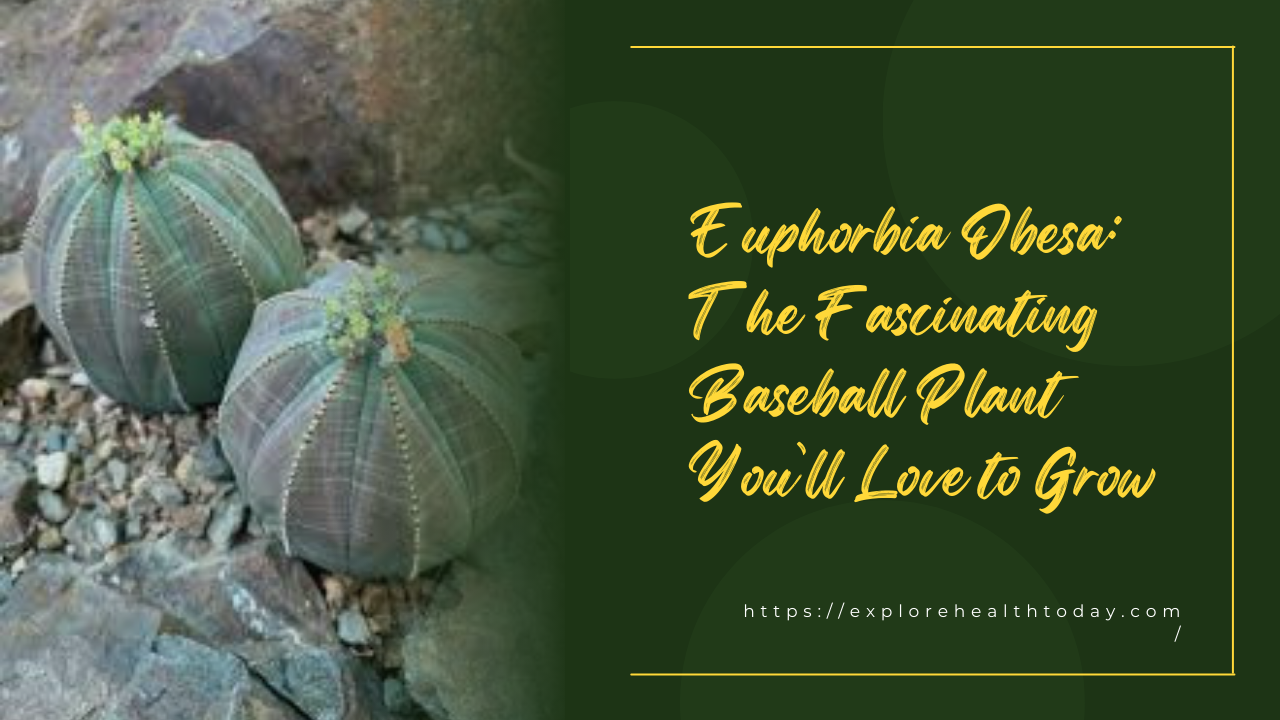If you’re searching for a low-maintenance, visually striking succulent to enhance your plant collection, Euphorbia obesa might be exactly what you need. Known commonly as the baseball plant due to its distinctive round shape and ribbed surface, this South African native is a rare and captivating addition to any garden or indoor plant setup.
Whether you’re a seasoned succulent enthusiast or just beginning your journey with houseplants, Euphorbia obesa plants offer both beauty and simplicity in care. In this article, we’ll explore what makes this species unique, how to grow it successfully, and where to buy it.
What Is Euphorbia Obesa?
Euphorbia obesa belongs to the Euphorbiaceae family and is endemic to the arid regions of South Africa’s Eastern Cape Province. Its spherical, green body with subtle horizontal striping and occasional purple tint makes it easily recognizable.
While it closely resembles a cactus, it is technically a succulent. Euphorbia obesa has evolved to store water and withstand extreme dry conditions, which contributes to its resilience and appeal in drought-tolerant gardening.
For more on Euphorbia classification and care, refer to trusted botanical sources like Royal Horticultural Society and Missouri Botanical Garden.
Ideal Growing Conditions for Euphorbia Obesa Plants
Light
Euphorbia obesa plants prefer bright, indirect light. While they can tolerate limited direct sunlight, extended exposure—especially in hot climates—can lead to scorching.
Water
Like most succulents, this plant requires minimal watering. Allow the soil to dry completely before the next watering session. Overwatering is the most common cause of plant stress and root rot.
Soil
Use a fast-draining cactus or succulent soil mix. You can improve drainage by adding perlite or coarse sand to standard potting soil.
Temperature
Euphorbia obesa thrives in temperatures between 20°C to 30°C (68°F to 86°F) and should be protected from frost. If grown outdoors in colder climates, it should be moved indoors during winter.
Fertilizer
During the growing season (spring and summer), fertilize monthly using a diluted cactus or succulent fertilizer.
Flowering and Propagation
Euphorbia obesa is a dioecious plant, meaning each plant is either male or female. It produces tiny flowers known as cyathia, typically at the apex of the plant. Propagation is generally done via seeds, as the plant rarely produces offsets.
To learn more about succulent pollination and seed propagation, visit World of Succulents.
Toxicity Warning
As with many Euphorbias, the white latex sap of Euphorbia obesa is toxic and may cause skin irritation or eye damage. Handle with gloves and keep it away from pets and children.
For safety guidelines on toxic houseplants, refer to ASPCA’s toxic plant list.
Conservation Status
Due to habitat loss and overharvesting, Euphorbia obesa is listed as a vulnerable species in the wild. Fortunately, widespread cultivation by ethical growers has reduced pressure on native populations.
Buy from reputable sources that propagate their plants from seeds or cuttings, not from wild collections.
Where to Buy Euphorbia Obesa Plants
You can purchase Euphorbia obesa plants from specialized succulent nurseries, botanical gardens, and reputable online platforms. Ensure that the seller provides proper care instructions and ethically sourced plants.
Some trusted online sources include:
Why Add Euphorbia Obesa to Your Collection?
- Distinct Appearance: Its spherical form and symmetrical striping make it a visually stunning addition to any plant collection.
- Minimal Care Needs: Ideal for busy individuals or beginners looking for a hardy, forgiving plant.
- Botanical Rarity: Its unique structure and endangered status make it a talking point for plant lovers.
About ExploreHealthToday.com
ExploreHealthToday.com was created to be a one-stop resource where readers can find up-to-date, well-researched articles on a variety of health topics. From nutrition and wellness to lifestyle and mental health, we strive to provide reliable information to help you make informed decisions about your well-being.
We believe that good health starts with good information, and our mission is to empower our readers with knowledge they can trust.
Visit us at ExploreHealthToday.com to learn more.





